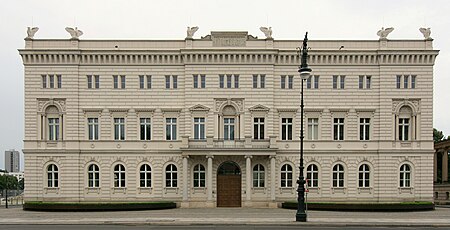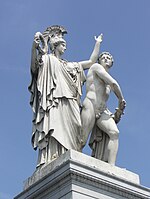Alte Kommandantur
Berlin building and structure stubsBuildings and structures in BerlinRebuilt buildings and structures in Berlin

The Kommandantenhaus (English: Commandant's House), also called Alte Kommandantur (Old Commandantura), on Unter den Linden boulevard in the historic centre of Berlin is the former headquarter of the city's commandant. It was built in 1654 and renovated from 1873 to 1874 in Renaissance Revival style. Damaged during the Allied bombing in World War II and later demolished, it was rebuilt from 2001 to 2003 as part of the Forum Fridericianum. Since then, it has been home to a representative office of Bertelsmann. The Kommandantenhaus was the workplace of the French writer Stendhal, the German politician Otto Wels and the German Resistance member Paul von Hase.
Excerpt from the Wikipedia article Alte Kommandantur (License: CC BY-SA 3.0, Authors, Images).Alte Kommandantur
Under the Lindens, Berlin Mitte
Geographical coordinates (GPS) Address External links Nearby Places Show on map
Geographical coordinates (GPS)
| Latitude | Longitude |
|---|---|
| N 52.517222222222 ° | E 13.397777777778 ° |
Address
Kommandantenhaus
Under the Lindens 1
10117 Berlin, Mitte
Germany
Open on Google Maps










